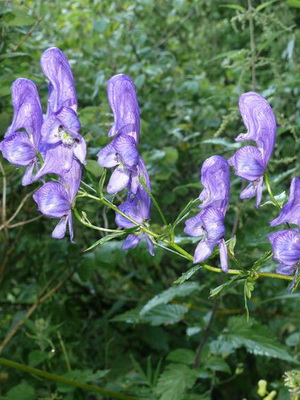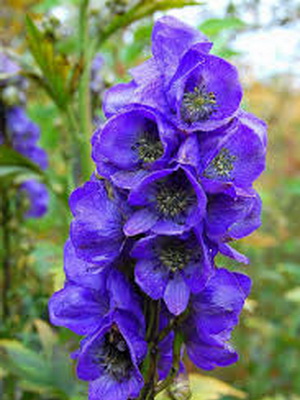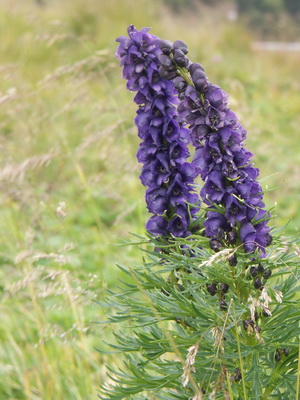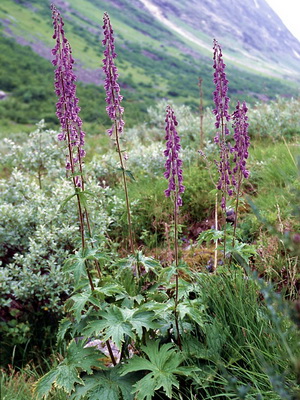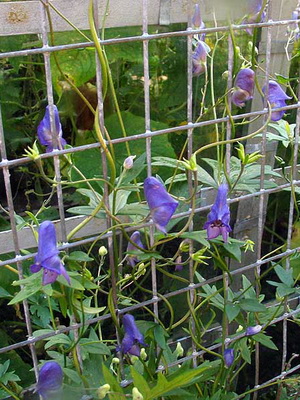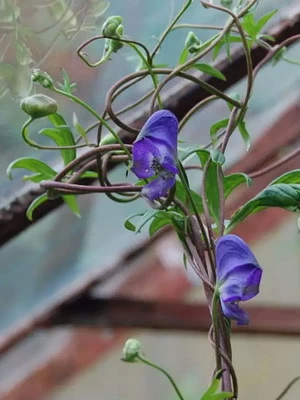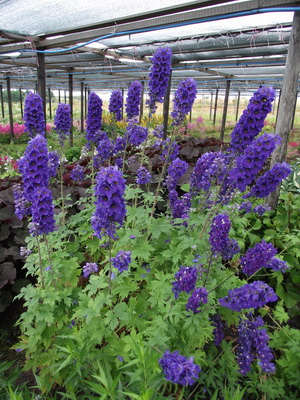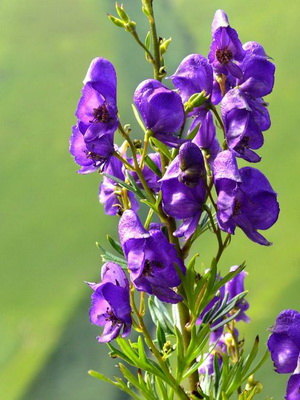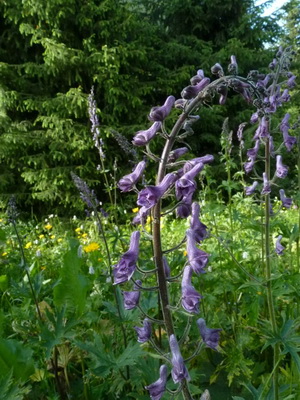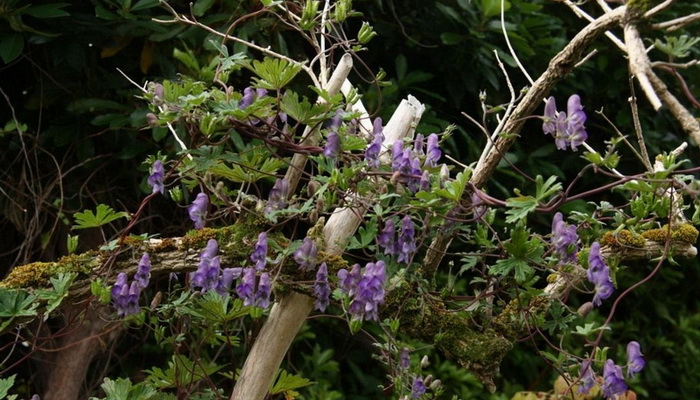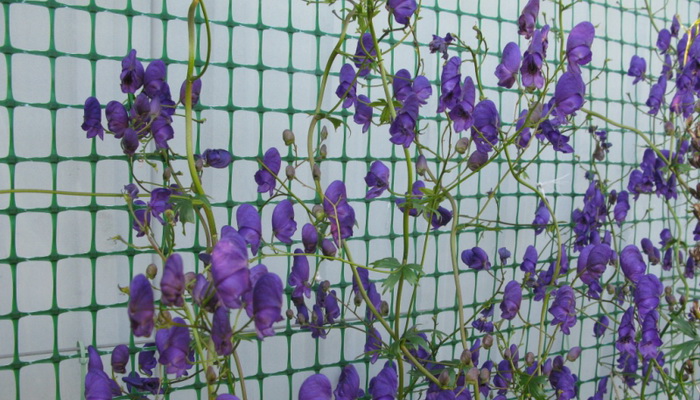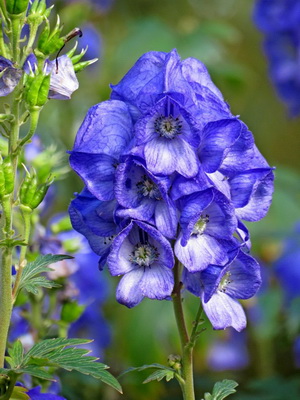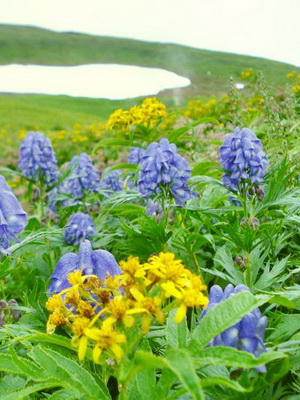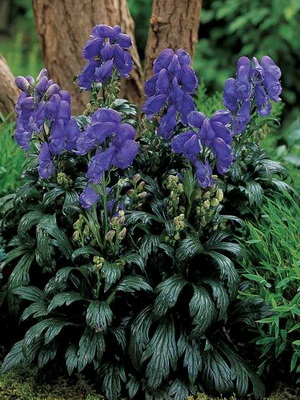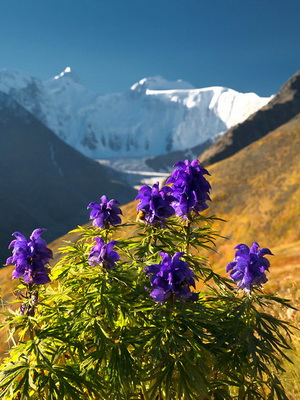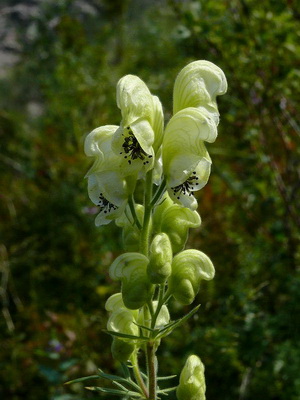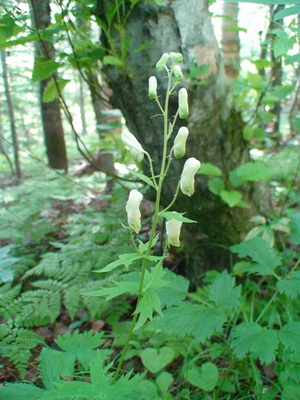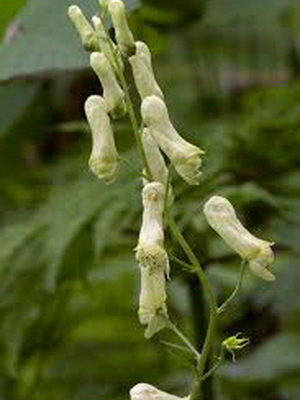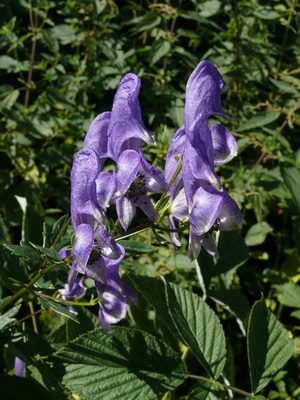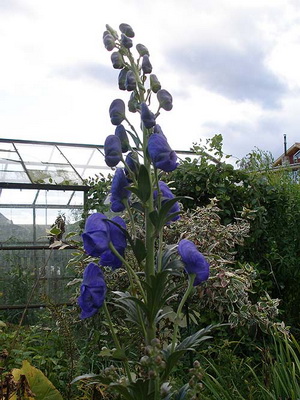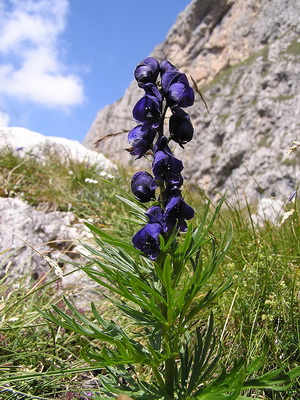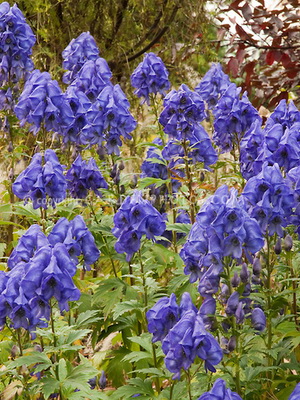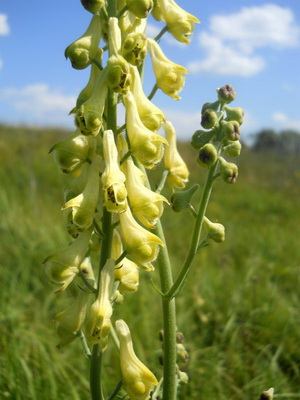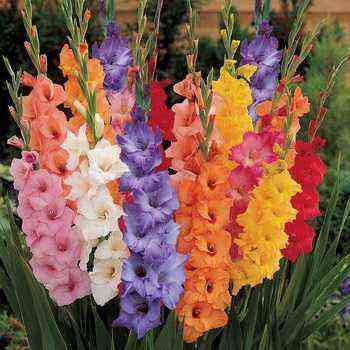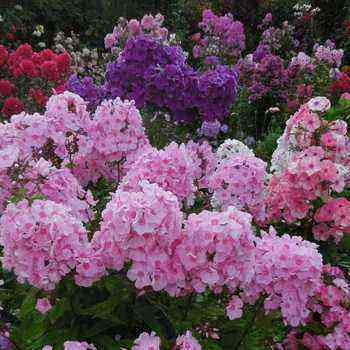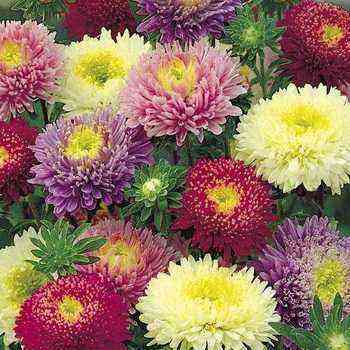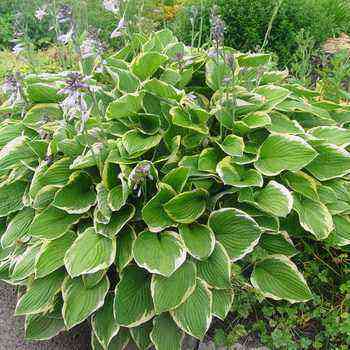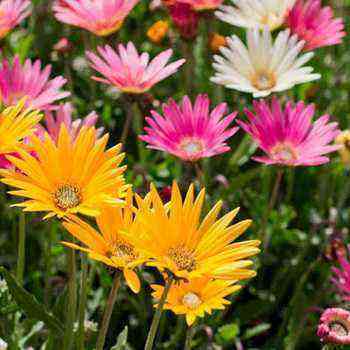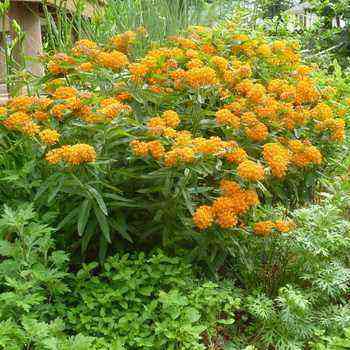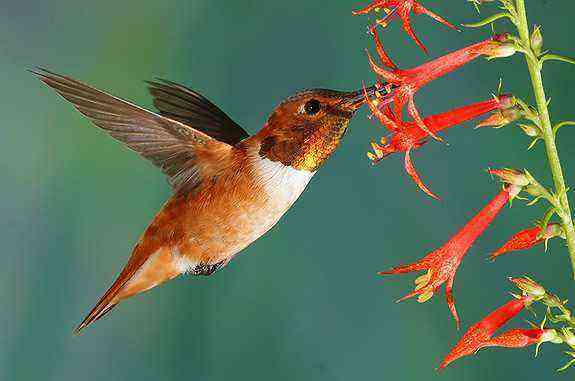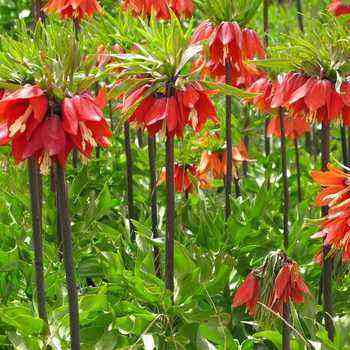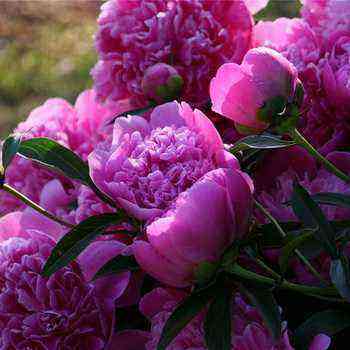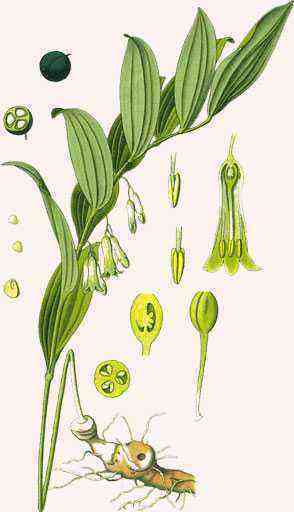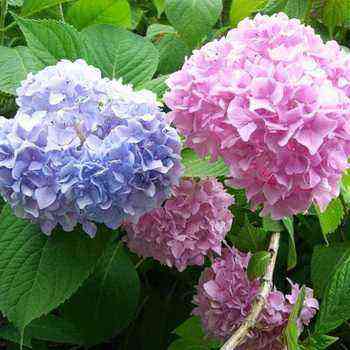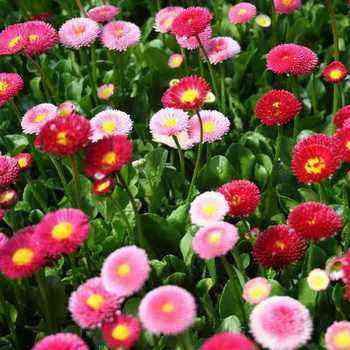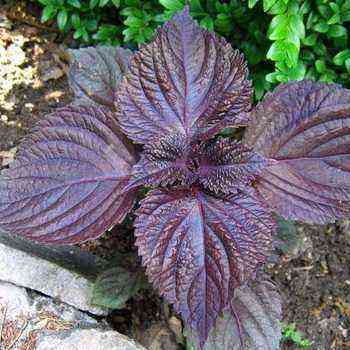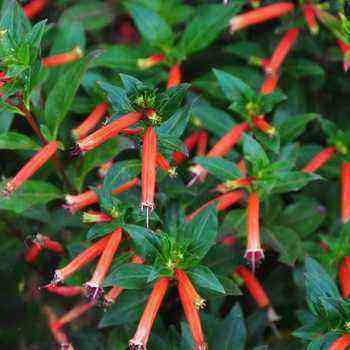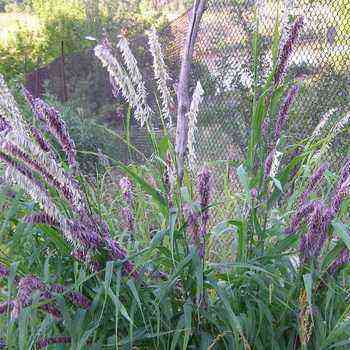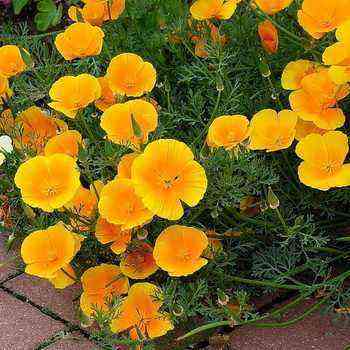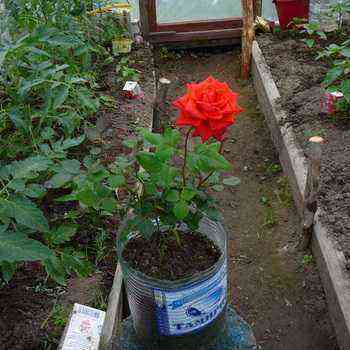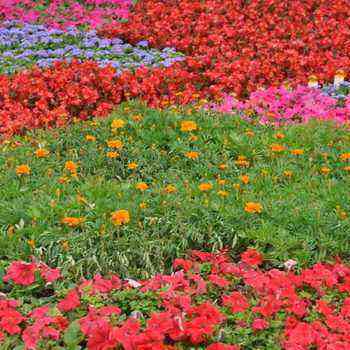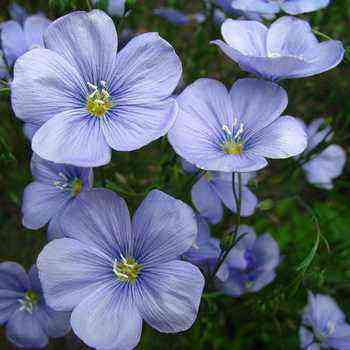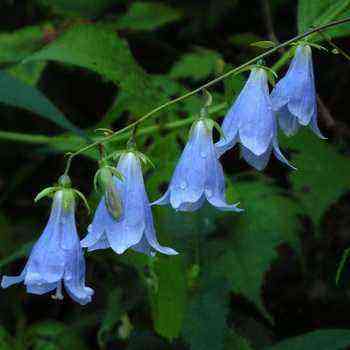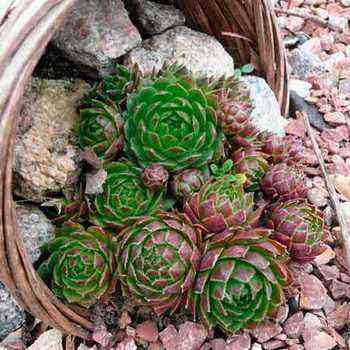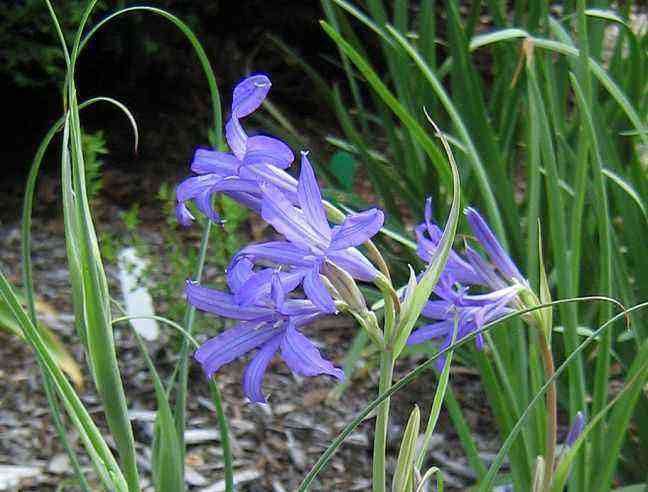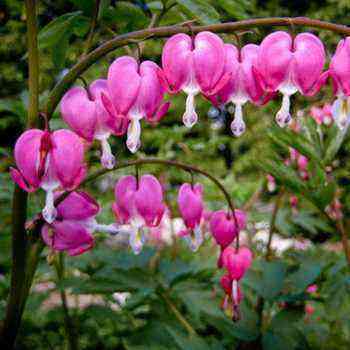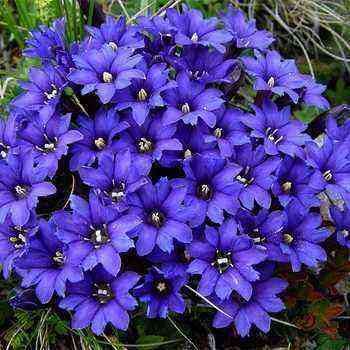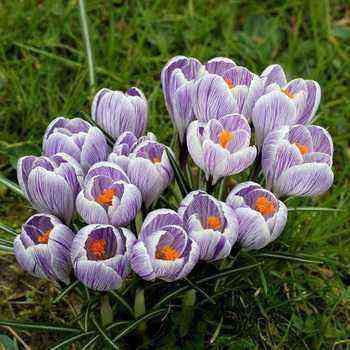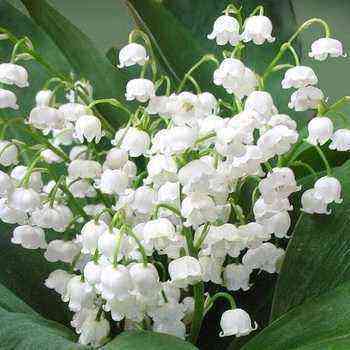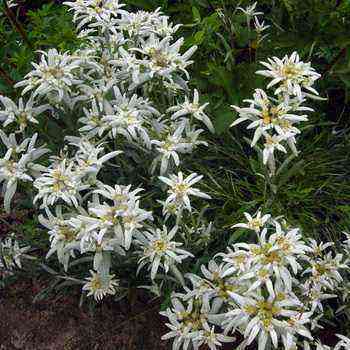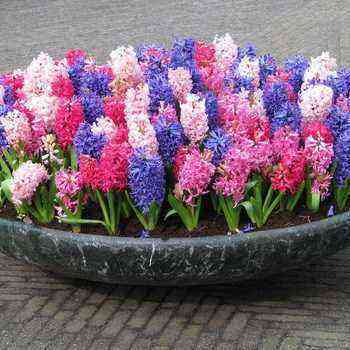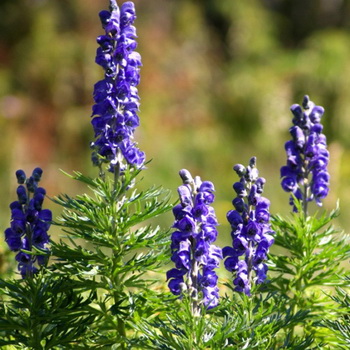
The article provides a detailed description of aconite and its types with a photo, after looking at which a gardener, who was not previously familiar with such a plant, will be able to choose something new for his site.
Aconite or wrestler (Aconite), belongs to the numerous family of buttercups (Ranunculaceae), which includes more than 300 species of mainly herbaceous perennials. Most of them have toxic properties to varying degrees. They contain nerve-paralytic alkaloids, of which the most dangerous are aconitine, zongorin, mezaconitine, delsimine and others used in medicine. The characteristic of many types of aconites allows them to be used as ornamental garden plants. Several rare species need protection.
Biological description of the aconite flower
According to the biological description, aconite is a perennial root-tuberous or rhizomatous herb with erect or curly shoots. The straight stem reaches a height of 1.5 m, and the curly – up to 3 m.
The leaves are alternate, rounded in outline, dark green, petiolar, deeply and repeatedly lobular-five-dissected.
Inflorescence is an apical raceme of large irregular flowers, depending on the species, having different colors: blue, purple, lilac, yellow, cream and rarely white. They have large, bizarre sepals – five-leafed, corolla-shaped; the upper one looks like a helmet or a cap, under which all other parts of the flower are hidden. Under this helmet there is a reduced corolla, turned into two blue nectaries, attracting pollinators – bumblebees. Without bumblebees, aconite plants cannot reproduce, therefore the areas of their geographical distribution on Earth coincide with the areas of distribution of bumblebees.
The fruit is a dry three-nested leaflet. Tubers are elongated-conical, longitudinally wrinkled from the surface, with traces of removed roots and with buds on the tops of the tubers. The length of the tubers is 3–8 cm, the thickness in the wide part is 1–2 cm. The color is black-brown outside, yellowish inside. The taste and smell are not checked, since the aconite tubers are very poisonous, which is explained by the presence of alkaloids, the content of which is 0.8%. Aconite blooms in the second half of summer from late July to September.
You can see the aconite flower in the above photo, where its distinctive features are well traced.
Where does the perennial aconite grow
Aconite grows in humid places along river banks and along roadsides, on humus-rich soils, in mountain meadows. Often cultivated in gardens.
Northern fighter grows in the forest-tundra, forest and forest-steppe zones of the European part of Russia. It is confined to fresh and moist soils, grows in forests, their edges, tall-grass and forest meadows, ravines, river banks, in the mountains it rises above the forest belt and is found there in subalpine, less often alpine meadows.
The white-mouthed wrestler grows in the Altai mountains at an altitude of 1500 – 2500 (3000) m above sea level, in forest and subalpine meadows, glades and spruce forests, among creeping juniper and thickets of shrubs, mainly on shady, less often on steppe slopes, from mountain – meadow and mountain forest soils.
The aconite climbing flower grows in forests, along the edges, on the outskirts of bogs, tall grass, floodplain and dry meadows in Western Siberia (Irtysh, Altai regions), in Eastern Siberia (all regions), in the Far East.
As you can see, this herb is found everywhere due to its vitality and unpretentiousness to growing conditions. These qualities have been appreciated by many gardeners and are successfully growing ornamental types of fighter on their site.
Popular types of aconite
All types of aconite are common in Europe, Asia, North America.
About 75 species of aconite grow on the territory of Russia. The most poisonous is the onion wrestler (poisonous wrestler). Most often, the following types are found and are used: bearded, tall (northern), Dzungarian, medicinal, Karakol, Kuznetsov, antidote, blue (purple), Fisher, Chekanovsky. Some of them are found only in natural conditions, others were cultivated by man and moved to the garden. However, one should not forget that all wild and garden aconites are toxic to one degree or another.
The following is a description of the most popular types of aconite plants, having familiarized yourself with which, you can choose the most suitable for your garden plot.
Aconite napellus (A. napellus) . Height up to 120 cm, erect stem, dark green leaves, shiny, dark blue flowers, collected in a branched inflorescence.
Aconite varieties:
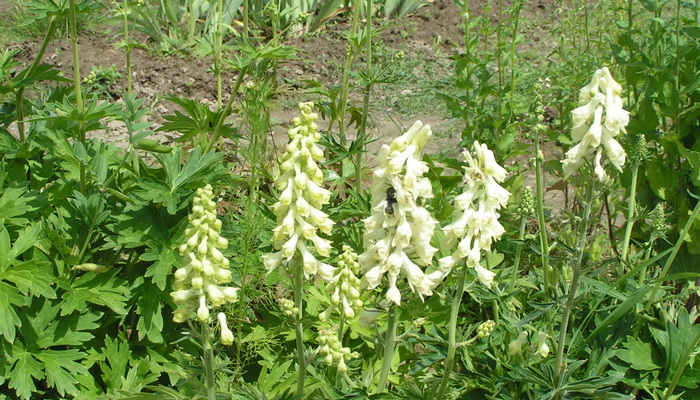
“Bluseite Album” – white flowers

“Carneum” – pink

“Bicolor” – white-blue
This species prefers a shady location.
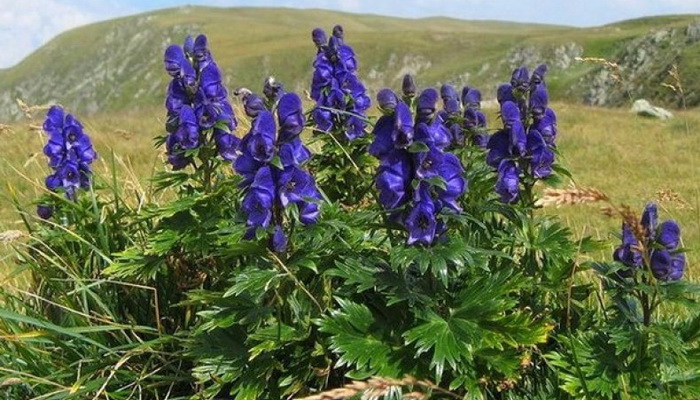
Aconite wolf (A. lycoctonum) . The plant is 1.3-1.5 m high, pyramidal in shape.
Leaves are shiny, dark green, flowers are often yellow.

A. Wilson (A. wilsonii) . Plants up to 1.8 m high. Leaves are dense, deeply dissected. The flowers are light blue.

Northern fighter or high aconite – A. excelsum Reichenb . – a perennial herb from the buttercup family.
An adult, flowering plant has a vertical rhizome with thin adventitious roots and thicker perennial growth roots. The root system has a mesh-perforated structure, inside the rhizome with roots (especially in flowering individuals) a cavity is formed, filled with soil and dead tissues of the rhizomes and root. Stem erect, up to 200 cm high, ribbed, pubescent together with leaf petioles and pedicels, separated and slightly tangled hairs. The leaves of the aconite grass are large, in general outline, cordate or kidney-round, up to 30 cm wide and up to 20 cm long, up to 2/3 or 3/4 cinquefoil 5-9-divided into wide, almost rhombic lobes, alternate, dense, leathery. Basal leaves are long-petiolate, stem leaves are short-petiolized, upper leaves are almost sessile. From the top side as root, so the stem leaves are covered with very sparse, slightly appressed hairs or almost glabrous. On the underside, pubescence is denser, especially along the veins; it consists of straight, less often slightly curly hairs. The inflorescence is racemose, loose, branched, often very long (up to 45 cm in length), rare. Lower pedicels are longer than flowers, arched-hanging. The flowers are monosymmetric with a simple five-membered perianth, mostly intensely dirty or grayish-violet, almost white inside the pharynx. The helmet is high, inclined forward, its height is 20 – 25 mm, i.e. almost twice the width at the level of the spout. Lower pedicels are longer than flowers, arched-hanging. The flowers are monosymmetric with a simple five-membered perianth, mostly intensely dirty or grayish-violet, almost white inside the pharynx. The helmet is high, inclined forward, its height is 20 – 25 mm, i.e. nearly twice the width at the level of the spout. Lower pedicels are longer than flowers, arched-hanging. The flowers are monosymmetric with a simple five-membered perianth, mostly intensely dirty or grayish-violet, almost white inside the pharynx. The helmet is high, inclined forward, its height is 20 – 25 mm, i.e. almost twice the width at the level of the spout.
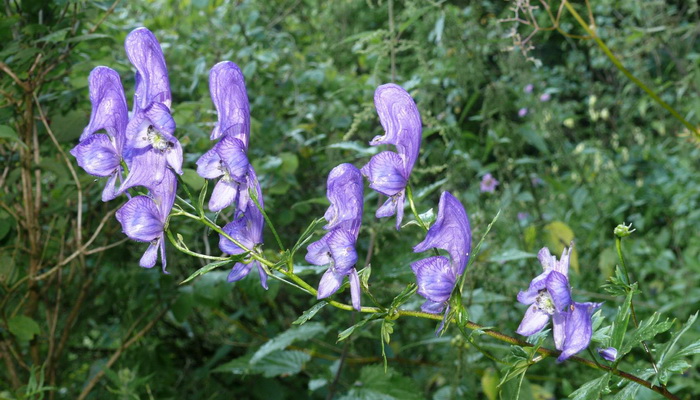
Aconite white – mouthed – A. leucostomum Worosch. – a perennial herb from the buttercup family, popular with gardeners.
Taproot with numerous lateral branches, vertical rhizome without root tubers. Stem 120 – 180 cm high, ribbed, pubescent below the inflorescence with short, velvety, bent, in the inflorescence – glandular hairs. Leaves are alternate, dense, leathery, 10 – 20 (40) cm wide and 10 – 20 cm long, reniform-rounded, palmate cut into 5 – 11 lobes, the length of which reaches 0.9 times the width of the leaf blade, glabrous above or with sparse hairs below , especially on strongly prominent veins, with short, more densely spaced, bent hairs. Basal leaves are long-petiolar, stem leaves are short-petiolized, upper leaves are almost sessile. The stem and leaves never have long, straight bristles. The inflorescence is racemose, sometimes branched at the base, multi-flowered (up to 40 flowers). Pedicels are short, 4 – 23 mm long, pressed to the stem, densely pubescent. Bracts are usually longer, less often slightly shorter than pedicels, almost filiform, located at the base, in the middle part or below the middle of the pedicel. The flowers are monosymmetric with a simple five-membered perianth, of various colors, most often dirty purple, less often grayish yellow, almost white in the throat and inside. The helmet is straight, narrow, with a strongly elongated nose. The nectars are large. Fruits are three-leafed, often glandular pubescent. Seeds are triangular, transversely wrinkled. The helmet is straight, narrow, with a strongly elongated nose. The nectars are large. Fruits are three-leafed, often glandular pubescent. Seeds are triangular, transversely wrinkled. The helmet is straight, narrow, with a strongly elongated nose. The nectars are large. Fruits are three-leafed, often glandular pubescent. Seeds are triangular, transversely wrinkled.
What is one of the most famous varieties of aconite herb – white-mouthed is shown in the photo above.

Aconite Baikal – A. The czekanovkyi Steinb. – a perennial herb, up to 80-120 cm high.
Its roots are in the form of two tubers; stem straight, simple or branched in inflorescence, round, glabrous below, internodes long; leaves are green, glabrous, the lower ones are on long, 4-7 cm petioles, the upper ones are short or almost sessile; the leaf plate is pentagonal in general outline, 10-12 cm wide, 8-9 cm long, finger-dissected. Inflorescence is a terminal loose raceme, 15-40 cm long, of dark purple flowers; helmet about 1.5 cm long, hemispherical; leaflets 3 naked.
Blooms in July and October.
Aconitum winding – A. volubile .- toxic herbaceous plant height 45-115 cm, which stems curly, korneklubni small, about 5 mm thick; leaves are thin, pentagonal in outline, with lanceolate or broadly lanceolate acutate lobes and teeth; pedicel with short, adpressed, less often spaced straight hairs.
Aconite arcuate – A. The arcuatum Maxim . – a perennial herb. The plant is close to A. Fischer, but differs from him in the following features: its stem is ascending, winding, sometimes slightly curling in the inflorescence, less often straight, leaves are thin; the inflorescence is a very loose panicle, from the arcuate outgoing peduncles and the pedicel, as it were, branching improperly, the flowers are often bent back; spur up to 3.5 mm long.
Aconite Korean – Acomtum coreanum is a perennial herb, up to 1.5 m high.Rhizome in the form of spindle-shaped thickened tubers: the stem is straight, slightly sinuous in the upper part of the inflorescence, evenly leafy from the middle, branched only in inflorescences, leaves up to 10 wide and long centimeters, palm-shaped five-cut; lower leaves on long (up to 10 cm long) petioles, upper leaves on short, pressed to the stem; inflorescence – simple or branched brush; flowers 2-3 cm long and 1-2 cm wide, yellow with a protruding darker venation, pedicels 0.5-4 cm long, outside the perianth densely pubescent with small yellowish curly hairs. Blooms in August and October.
Aconite large – Aconitum maximum – a perennial herbaceous plant 100-200 cm high. Rhizome is short, knobby; the stem is high, straight, strong. Inflorescence – few-flowered, straight, often short and dense raceme; flowers are densely haired, dirty purple, up to 3 cm long and up to 1.5 cm wide, hairy outside, wide helmet, no spout or with a small spout up to 2 cm long. The nectars are straight, with a curved spur and a bilobed lip. Blooms in August.
Aconite Kuznetsova – Aconitum Kuznezoffi – a perennial herb, 70-150 cm high. Stems are smooth, high, the terminal raceme is multi-flowered, very dense; pedicels are thin, short, no longer than flowers, inflorescences are adressed, the flowers are dirty purple, the helmet is conical, 7-10 mm tall, with a long nose directed forward, the seeds are parallel leaflets.
Aconite open – flowered – Aconitum chasmanthum Stapf. – a perennial herb up to 50 cm high.
Aconite antidote – Aconite anthoroideum DC. – a perennial herb, 20-100 cm high. The leaves are ovoid in outline, palmate-divided with linear or linear-lanceolate sharp lobes; basal on long petioles, upper ones almost sessile. The flowers are large, yellow, collected in dense racemes with a simple fluffy, rarely bare perianth. The upper unpaired leaflet is raised above the rest, forming a helmet. The fruit is a leaflet. The plant is decorative. In floriculture, garden forms of this species are known. It takes root well when transplanting adult plants.
Aconite shady – Aconitum umbrosum Kom . – perennial herb, 80-120 cm high. Stem somewhat ascending, basal leaves are long-petiolate (up to 40 cm) with a number of 1-2, with a plate up to 10 cm long and 20 cm wide, stem leaves 2-3; inflorescence — loose, few-flowered, weakly branched raceme at the base. The flowers are dirty yellow, the bracts are small, filiform, the helmet is wide-cylindrical, slightly compressed in the middle, at the end it is widened with a downward-facing spout, 15-17 mm long, 7-10 mm wide, nectaries with a spur spirally bent back and down and a short, straight, notched lip. Blooms in June and August.
Aconite Turchaninova – Aconitum turczaninowii – a perennial herb, 40-100 cm high, growing in enlightened places, along the edges, dry forests and steppes in Eastern Siberia (Angara-Sayan region (Kansk forest-steppe), Daursky region).
The rhizome is in the form of two oblong tubers, the stem is strong, straight, branched, the leaves are gray-green up to 10 cm long and up to 12 cm wide, dissected to the base into 5 broad-lanceolate segments. Inflorescence is a terminal long raceme of large blue flowers, flowers up to 3.0 cm long, about 1.3 cm wide with an arcuate curved nose; the helmet is shifted from the lateral tepals, its length is about 2 cm, width is about 1.5 cm, height is up to 1 cm. It blooms in July-August.
Fischer’s Aconite ( Fisher’s Wrestler ) – Aconitum fischeri Reichenb. – a perennial herb, 100-160 cm high.
Tubers are almost conical; additional tubers develop by autumn; stem is round, strong, straight, glabrous; leaves are deep, palmate-incised into 5-7 lobes, dense, sometimes leathery; inflorescence – a rare brush, often thick, flowers are bright blue, rarely white; helmet domed-pin-shaped, with a medium elongated nose, 2-2.4 cm long and 1.5-2 cm wide, up to 1.5-1.8 cm high, spur is short (1-1.5 mm), capitate. Blooms in July and October.
Aconite Shchukin – Aconitum sczukini Turcz is a perennial herb. Tubers from ovoid to fusiform, 1.5-2.0 cm long and 0.5-1.3 cm thick, curly or sinuous stem only in the upper part, 45-115 cm high, in curly specimens up to 4 m; leaves 3-9.5 cm long and 5-15 cm wide, 3-5-dissected to the base, almost compound; blue flowers (2-3 cm long), collected in a raceme or loose panicle 15-20 cm long; the helmet is rounded-conical, its height is 15-18 mm; leaflets are naked or pubescent; the seeds are concisely triangular. Blooms in July and August.
Aconite is a bearded herbaceous poisonous plant with a long root, consisting of accrete lobes, with a high fluffy stem 50 – 120 cm tall. The leaves are alternate, large (3-6 cm in diameter), five- or nine-partite, pubescent below. Flowers are gray-yellow, slightly pubescent, collected in a brush 8 – 25 cm long. Aconite bearded blooms in July-August. The fruit is a fluffy leaflet. Seeds are triangular, with a membranous wing. Distributed in the steppe, forest-steppe zones of Siberia and in the mountainous regions of the forest zone.
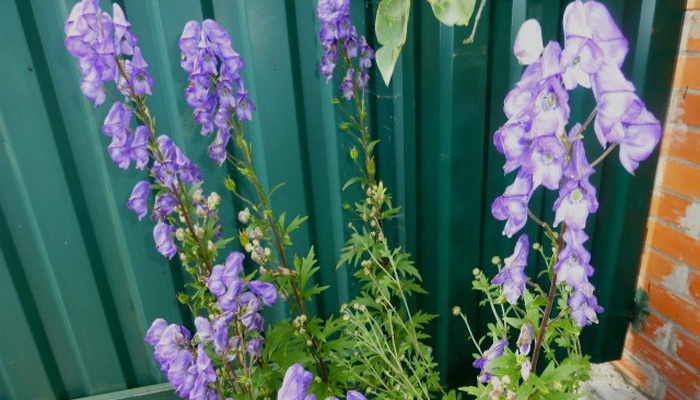
The perennial Wilson’s aconite belongs to the decorative, in addition, the plants of this species are the tallest of the aconites, they grow up to 1.5 m.
In horticulture, Barker, s Variety, blooming until October, is common. Although the plant is cultivated in the garden, it remains highly poisonous. In no case can it be used independently for the preparation of medicines and used without the advice of a doctor. Children should be warned about this. Poisoning can occur even if you carry the tuber in a damp hand for a long time or transplant the plant without using gloves or mittens.
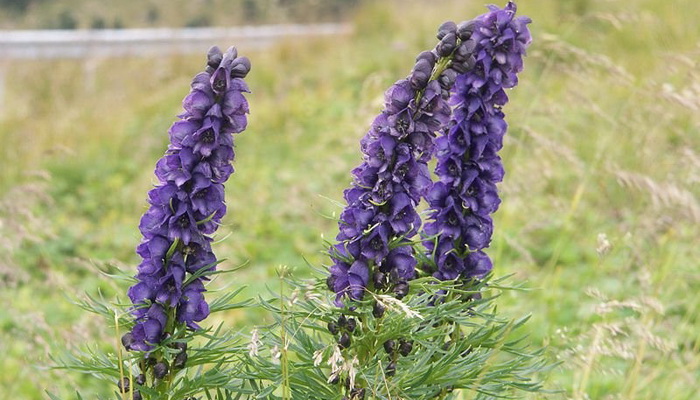
Perennial flower aconite Dzungarian is most often used for medicinal purposes, collecting and drying raw materials.
It is a fairly tall (from 70 cm to 2 m) perennial with large, strongly dissected leaves (up to 10–12 cm). The rhizome is horizontal, multi-headed, consisting of accreted large root tubers: young and one or several old ones, connected in a chain. The flowers are large (2–4 cm), zygomorphic, collected in apical decorative brushes. The perianth is blue-violet. The corolla is modified into blue nectaries with a spur, the calyx is irregular, the upper leaf looks like a helmet with a spout. The fruit is a three-leaf (often underdeveloped single-leaf) with a large number of black seeds. It blooms in June – August, and the seeds ripen in September.
Aconite Karakol is close to Dzungarian. Also, this aconite flower is poisonous, and at the same time, the rhizome of the plant is used for treatment.
In recent years, new varieties have been developed:

Bressingham Spire – purple
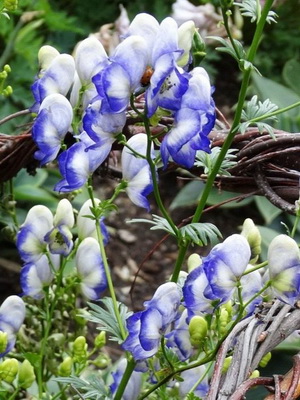
“Bicolor” – blue and white

“Newry Blue” – dark blue
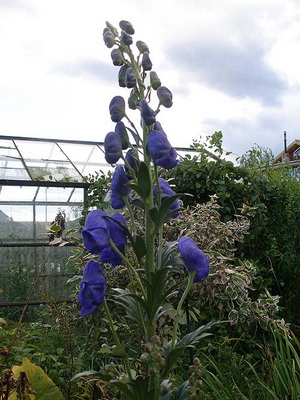
“Spark, s Variety” – tall (1.4 m)

“Aconite napellus f. roseum “- pink-flowered form.
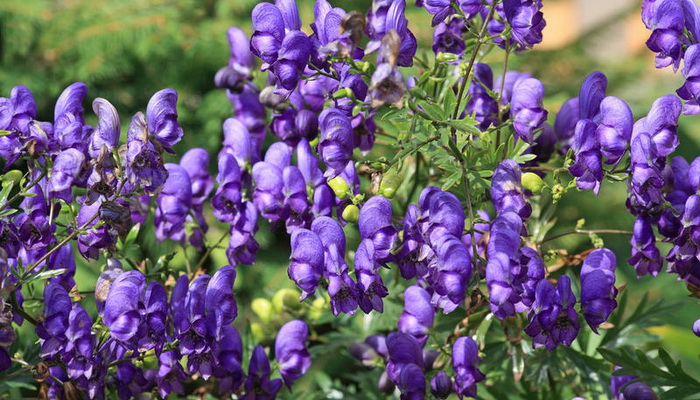
Aconite violet (blue) belongs to perennials.
In Russia, it is ubiquitous, you can find it even in the northern regions. It has been in cultivation since 1951. This species has long, erect stems, reaching 120 cm in height. Leaves are long-petiolate, finger-dissected. Flowers can be yellow, blue, purple, very rarely white. The root system consists of spindle-shaped, powerful roots. Blooms in June – August.
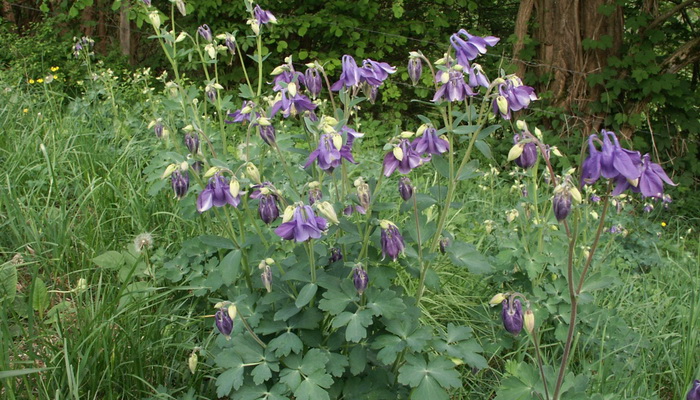
Woolly aconite grows in forests, meadows, and rocky slopes. The plant has erect stems.
From the description of this aconite flower, it follows that its leaves are colored dark green, their arrangement on the stem is alternate, the upper side of the leaf blade is covered with short thick hairs. The roots are thickened, usually tuberous. Flowers are located at the tops of the stems, collected in a brush. Before flowering, an inflorescence-spike appears in the upper part of the stem, consisting of flowers of irregular shape. They can be blue and white, white and yellow, purple and blue. Some of them have a pointed spur clearly visible. They bloom at different times in July – September. The fruit is a leaflet. There are other, less studied types of aconites. Doctors are showing great interest in aconite white mustache, from which the antiarrhythmic drug Allapelin is obtained.
Growing and reproduction of aconite
When growing a perennial aconite flower in the garden, you should work with it very carefully, preferably with rubber gloves.
Aconites are excellent ornamental plants, undemanding to soil, but grow better on loose, fertile substrates with good drainage. Aconite is photophilous, it also tolerates partial shade. All types of aconite are frost-resistant.
Care is very simple: one or two additional fertilizing with full mineral fertilizer; regular loosening of the soil, watering.
Aconite reproduces very simply by dividing the bush – in April-May. They plant 2-3 tubers in a hole at a distance of 25-30 cm to a depth of 7-10 cm. Curly aconite is best divided in autumn, in the first half of September. Can be propagated by stem cuttings. For this, young herbaceous shoots are used, which appear in early spring from overwintered tubers. Later shoots, which have developed into leafy stems, do not take root.
It is possible to grow aconite using seeds, but the embryo of the seed is underdeveloped, so they need to be stratified. The stratification period depends on the species and must be indicated on the seed bag. The optimal sowing time for seedlings is in March, when it becomes light. The seeds are small, it is not necessary to cover them with soil. At the stage of one or two leaves, the seedlings dive. In early September, they can be dropped off.
You can sow before winter. Seedlings can appear in two winters. Varietal characteristics are not preserved during seed propagation. Seedlings usually bloom in the second or third year. Seeds remain viable for one to two years.
How the wrestler or aconite is used
Now this flower, after many years of oblivion, is again coming into fashion. A restrained wrestler or aconite plant with dignity will find a place for itself in a flower garden. It can be used both to create cool bands like white phlox, as a balancing backdrop for brighter colors, or just in a mixborder.
Aconite looks great next to irises, aquilegia, rudbeckia. Tall varieties and species are excellent tapeworms. If you plant different species in the garden, then you can observe flowering all summer until frost. Aconites are smart and without flowers. They have decorative not only flowers, but also leaves: strongly dissected, like all buttercups, shiny, dark green above and slightly bluish below, sometimes slightly pubescent.
Knowing what aconite looks like, you can skillfully apply it in the design of flower beds, flower beds, lawns, as well as in group and single plantings. Curly species are used to decorate gazebos and pergolas. Suitable for cutting.
Like all poisons, aconite is used in small doses for medicinal purposes, but rarely and very carefully. In Tibet, aconite is still used to treat many, including very serious, illnesses.
Dried tubers of wild plants and their leaves are used as medicinal raw materials. The tubers are harvested in the fall from August 15 to October 1. Dig with a shovel, remove soil and damaged parts, wash in cold water and dry quickly at 50–70 ° C with good ventilation. From 4 kg of fresh tubers, 1 kg of dry tubers is obtained. The leaves are harvested before the flowering plants or during their flowering, dried in the sun and dried under a canopy. The raw material should remain dark green after drying. It is necessary to store raw materials of aconite separately from non-poisonous herbs, with the obligatory label “Poison!”, Out of the reach of children. Shelf life in bags or sealed containers – 2 years.
Since wild and decorative species of aconite contain poisonous compounds in their stems and tubers, they must be collected after wearing gloves or mittens. When working with aconite, do not touch your eyes, and upon completion of work, wash your hands thoroughly with soap and water.
The poison of aconite is so strong that even bee honey collected from aconite is poisonous. The further south the plant grows, the stronger its poison. It is believed that our northern varieties of aconite are not so poisonous, and if they were grown on fertile soil, then after a few generations they lose their toxicity. The name of the plant “Aconite” probably comes from the name of the city of Akon in Greece, where this plant was first collected to obtain poison from it, from which medicines were prepared.
In the photo below, the aconite plant looks modest, but it has its own special charm and attractiveness, and of course, it can decorate a personal plot with a competent approach of the gardener:
